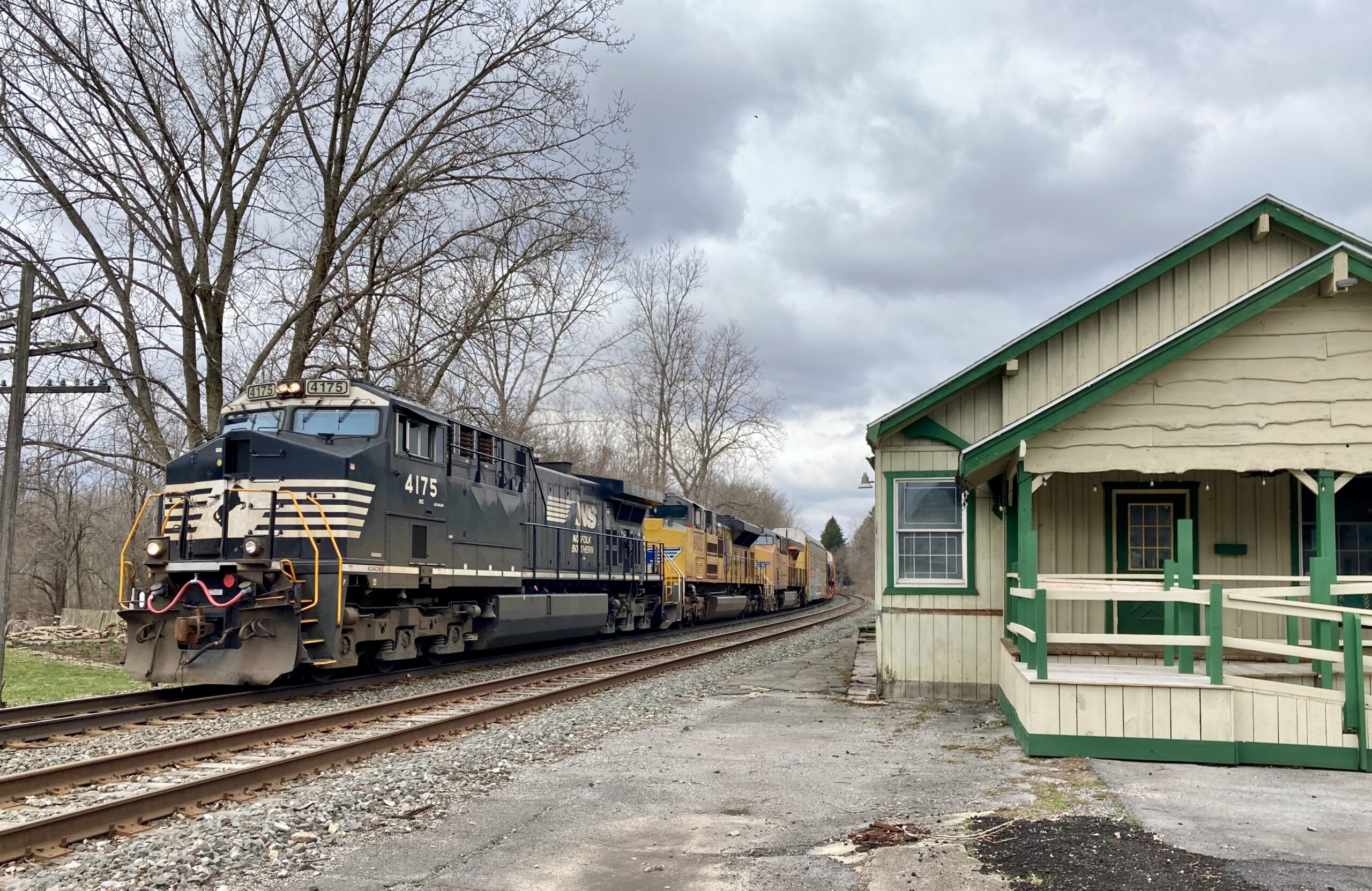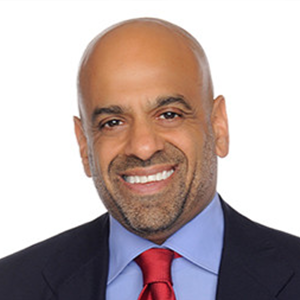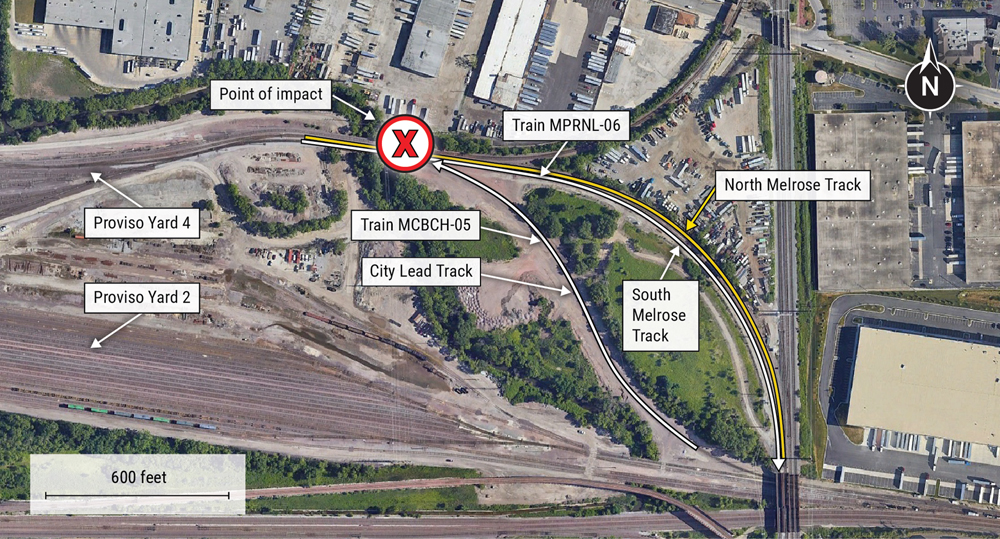
BALTIMORE – CSX Transportation and Norfolk Southern are working to improve their service amid ongoing crew shortages and supply chain disruptions, executives told shippers on Thursday.

“We’re aware that it’s been a tough two years. Clearly we haven’t shown our best self,” Farrukh Bezar, CSX’s senior vice president and chief strategy officer, told the North East Association of Rail Shippers.
The railroad is committed to providing reliable service and restoring merchandise performance metrics to the record levels achieved in 2019, Bezar says. “Our entire team is motivated to mitigate any service challenges as we emerge from the pandemic and address continuing supply chain disruption,” Bezar says.
The railroad’s conductor training classes are full and fewer people are dropping out, so CSX expects its train and engine crew numbers to dramatically increase by mid-summer, Bezar says.

“At Norfolk Southern we are committed to restoring service as quickly as possible. And let me say this up front: Our service is not what we need it to be, it’s not what our customers need it to be, but it will get there. We are dedicated to that,” Chief Marketing Officer Ed Elkins says.
But he added that NS is just one link in a broader global supply chain that is also struggling through disruptions and swings in demand, including ports, truckers, warehouses, and other railroads.
The problem at NS, Elkins says, is centered on train crew levels. Last year NS experienced higher than usual attrition in its crew ranks and has had difficulty hiring new conductors in a tight labor market.
“It really is a resource problem for us….It’s very hard to hire enough people that are qualified and willing to do the work,” says Elkins, who began his railroad career as a conductor.
But he says help is on the way as NS has stepped up its hiring and has a record number of conductors in training.
UP initiates ‘second chance’ program
Jacque Bendon, vice president of industrial at Union Pacific, did not mention the railroad’s service problems during her presentation. But she did address how UP has responded to a changing labor market that has made hiring more difficult.
“Workforce is on everybody’s mind. It is a challenge right now in a post-COVID world …. we are hiring for growth,” Bendon says.
The railroad quickly realized last summer that it was not receiving as many applicants for train crew openings, that the hiring process was taking longer, and there was a higher washout rate in training.
UP has streamlined the hiring process and made it easier to apply online. And it’s testing ways to increase the candidate pool, including a second-chance program aimed at people convicted of non-violent crimes.
“Historically we would not consider hiring felons,” Bendon says. “There are some people — nonviolent felons — who deserve a second chance, who’ve paid their debt to society. And so we are testing that out.”
Train crew employment levels are a leading indicator for when rail service might improve, says Todd Tranausky, vice president of rail and intermodal at FTR Transportation Intelligence, a freight forecasting firm.
The industry’s overall performance metrics — including average train speed and terminal dwell — are not good and have deteriorated largely due to crew shortages, he says.
“There’s certainly variation among carriers. But no carrier would stand up here and say they’re doing well,” Tranausky says. “I don’t think any carrier is satisfied with their service.”
In response to ongoing shipper complaints, federal regulators on Thursday ordered officials from BNSF Railway, CSX, NS, and UP to appear at a two-day hearing on rail service later this month.
Chesapeake Products, a Baltimore-based producer of sand additives and steel abrasives, has shifted all of its intermodal business to trucks due to unpredictable railroad service and a shortage of chassis and dray capacity.
Ken Sanchez, the company’s president, says intermodal shipments from Baltimore to the West Coast used to take 10 to 12 days. But when transit times recently rose to a month or more, he shifted the loads to the road. Although the higher costs of trucking were passed on to customers, they were willing to pay for faster and more reliable service, Sanchez says.
Chesapeake’s carload business has suffered from Class 1 service failures, too, Sanchez says. Among the problems: Cars sitting in yards for days, terminal delays, slower trains, car shortages, and non-responsive customer service.
The company also has experienced cars lost in transit. “Lost cars: Man this is a killer for me,” Sanchez says. “This is one thing — in this day and age of technology — that I just don’t understand.”
Chesapeake sends loaded hopper cars from Baltimore to Ohio. Some have gone astray, winding up in Michigan or even Montana. “How do you get a car that far out and nobody flags it? I don’t know,” he says.
He urged railroads to devise ways to use their car-tracing systems to automatically identify cars that are out of route and take corrective action.














Being a 25 year veteran of a major class one
I’ll give a simple solution. Make the job good enough to attract quality people that want to stay on as a career.Don’t make the place so horrible no one wants to stay let alone hire out. It’s simple give a decent work life balance and they will want to work for the railroad. It really is a very simple solution yet they hire spin doctors to make it sound like the problem is so complex. People used to line up around the block for a railroad job, not anymore because the word is out that these outfits are one step above working on a prison chain gang . They’ll spend billions fixing a problem they created only to find the solution was already there and far cheaper than losing revenue because they have decided to run everyone off on account of policy’s that were supposedly adopted to make more money. It’s like watching the keystone cops running into each other.
The culture continues to reward “no bad news” to the bosses on the “morning call”.
The UP doesn’t have to say anything at all, I heard it and saw it. When I was visiting my retired dad in Palm Desert last week, I was listening to some of the Dispatchers radio calls(he has a base station). The flipping of crews and holding trains to keep the system moving was…interesting.
Then yesterday I came home and decided to drive up CA Highway 99 up the Central Valley. I passed at least a half dozen UP trains stopped/parked in sidings, a G&W(SJVR) train parked on a siding, at least 4 of them railroad EB(NB by compass) and still witnessed 3 RR WB(compass SB) between Lathrop and Modesto.
As for the crew issue, I still contend you need to run the system so that crews swap half-way through their run(either 4 or 5 hours out) so that they always return to where they started from. It would require new districts probably and shorter, faster trains…trust me, the math works, just no one wants to admit it.
Charles Landey says ” Hire T+E crews that have to work any hour of any day on a short notice, are subject to layoffs on a whim …”.
It was thus 58 years ago when I first started railroading. It will be ever thus, until changes are made in the way pool or chain-gang crews are used. There have been many studies pointing out the problems with such a scheme. To date, there have been no implementations of any other way.
Those who identify a problem should have a solution in mind. Any suggestions … that would be acceptable to both Labor and Management?
Yes but Buffett has a lot of Coke stock and he does drink it.
Coke is Woke and Geico’s wokeness blew up in its face. Hopefully BNSF will stay on the sane side of the line. If not my cat Burlington will bite Warren Buffett in the nose.
Ironically, likely most if not all of the commentators here have money in funds that hold shares in the railroads mentioned in the subject article.
Is criticizing management hypocrisy?
How so? Maybe commentors feel they can run a railroad better or at least for the long term and not short term profit.
Ronald; while I do own railroad stock I also spent 40 years as a rail shipper across the agricultural, mining and chemical sectors. Rail service pretty much stank when I retired 3 years ago and, by all accounts, it’s worse now than back then.
Shareholders had better become pretty damned concerned about the way railroads are being run before all the business has been lost to other modes or the STB and Congress step in to impose new regulations.
All this nonsense about psr improving service has pretty much been proven to be absolute BS. Incredibly long trains that can’t make it across a single crew district within 12 hours and require a recrew; trains too long to fit into yards thus requiring more crews to taxi out and bring them into the terminal; trains stalling on grades because of fuel management programs that prohibit bringing more engines on line; the list goes on.
Railroad management these days seems to be absolutely clueless as to how to genuinely reverse course and improve service, retain employees and existing customers and bring new business to the railroads.
And until the Class 1’s find this enlightenment, don’t wait for things to get better, despite the happy talk and promises at analyst meetings and rail shipper conferences.
Curt-
I don’t think it is so much “Railroad management” that is absolutely clueless, but rather the coke-snorting yuppies on Wall St. leading “railroad management’ around by the nose (pun intended) who are absolutely clueless who are the culprit.
(That doesn’t quite explain the BSNF conundrum, of course…I’ve never heard any accuse Warren Buffet of being a coke-snorting yuppie…)
Do you want to be the first CEO to tell TCI and the Hedge Mafia why your ratio went up? See, there is the issue in a nutshell, no one wants to be the first to break ranks.
“Someone” has to have some cajones to say on an investor call that the ratio rose specifically to deal with customer driven issues. And that the ratio will continue to rise until we get the majority of our service back in line. If they put it in financial terms, like to get the ratio to X, we will have degrade service by Y and we will lose Z revenue because of it.
Then let the armchair conductors say all they want while they try to digest what you just spawned on them. As Moses once said, “dead slaves make no bricks” as Ramses tried to squeeze more out of less slaves.
As a small shareholder, I want to tell my railroad companies that I value investment in long term infrastructure and good labor-management relations over short term stock price increases. I was looking forward to voting my shares against TCI when CN called off its shareholder meeting. We shareholders who care about railroads as a benefit to society and believe that customer service, safety, quality and employees are to be valued above quick profits need a voice in the boardroom.
Hire T+E crews that have to work any hour of any day on a short notice, are subject to layoffs on a whim, and who will have to call into a computer to tell them how many horsepower they can deploy on their own train. That will solve all your crew shortages.
He He!!! AMEN!!!! (Never thought I would say that about one of your comments)
And don’t forget you may have to work 29 or 30 days a month!!!
Maybe dropping the Covid Vaccination Mandate would help with both current employee retention and finding a suitable set of new candidates.
I’m wary of “second chance” programs. I understand why these have been implemented, but watching the lack of success at some “final mile delivery” companies has lowered my expectations that most candidates won’t abide by “expected cultural norms.”
Interesting juxtaposition of comments. (Isn’t the COVID vaccination mandate also a cultural norm or trying to set up a cultural norm– albeit potentially temporary)
Anyway railroad jobs as set up already have lots going against them. See Charles Landy’s excellent and hilarious comment below.
get rid of PSR and put the customer first and treat your employees as humans. then get rid of all the CEOs who only answer to the share holder. that will take care of most of your problems.
AMEN!!!
Unforunately tort law favors shareholders over employees or customers. Shareholders are more likely to sue you or kick you out if they think they can get a better share price than customers are. (Or at least there is more press about that and rich shareholders likely have more resources)
A car heading from Baltimore to Ohio ends up in Montana? How does that happen? It’s not even on the same railroad!